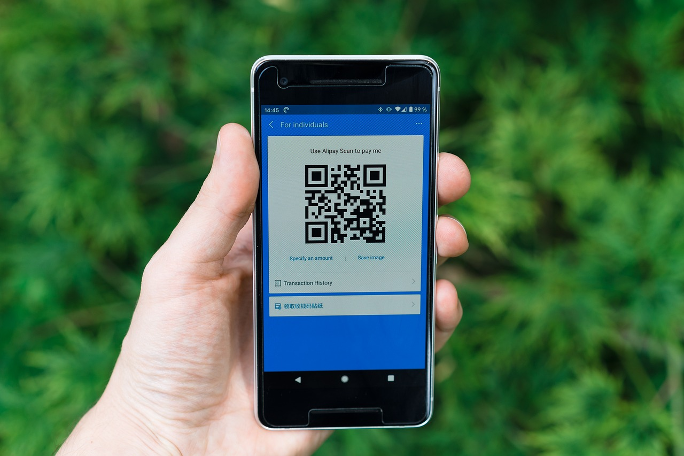In a bustling metropolis like Hong Kong, cash is still a familiar sight, even as digital payments gain ground.
Consumer attitudes in Hong Kong reveal the influence of both traditional and tech-forward payment methods. In 2023, 82% of consumers paid with cash, 91% with cards, and 79% with mobile wallets. The continued use of cash is driven by cultural factors like gifting cash in red envelopes during Lunar New Year, concerns over security and privacy, and the varying acceptance of alternative payment methods in Hong Kong stores.
But consumer sentiment appears to be changing — 67% of consumers in Hong Kong want alternative payment options to be available in more places. With a strong digital backbone and an internet penetration rate of over 90% in 2023, Hong Kong is ready for even wider digital payments adoption.
If you're looking to expand your business into Hong Kong, you must first understand its diverse and ever-evolving payment landscape.
Popular payment methods in Hong Kong
Hong Kong's payment sector offers various methods to cater to diverse consumer preferences:
Cash payments
Cash retains a strong hold in certain sectors like public transport, local markets, and smaller businesses. Although 2 in 3 consumers in 2023 want more payment options, many merchants still prefer cash over other methods.
Merchants point to high transaction fees and privacy concerns as major barriers to adopting e-payment systems, preferring the simplicity of cash. For some, learning new payment technologies can feel daunting, especially when mistakes come at a cost. This is especially true for Hong Kong's aging population — 21.37% being 65 or older in 2023 — many of whom are more comfortable with traditional payment methods. Despite government initiatives to push contactless payments, only 4,392 out of 11,500 public market stalls have made the shift.
Still, the overall cash usage in Hong Kong is shrinking, especially in point-of-sale (POS) and e-commerce transactions. By 2023, cash made up just 9% of POS payments and 3% of online transactions, with these figures projected to drop even further at 6% and 2%, respectively, by 2027.
Credit cards
With a card penetration rate of 3.4 cards per consumer, Hong Kong's payment landscape just saw a shift in power. In 2023, credit cards were used by 91% of consumers, overtaking cash which stood at 82%. Visa and Mastercard dominate the market space today, followed by American Express, Union Pay, and JCB.
Credit cards were still the primary payment method in Hong Kong, leading both e-commerce (41%) and POS (52%) transactions. The momentum continues: credit card payments in Hong Kong are forecasted to reach US$171.93 billion by 2029, a compound annual growth rate (CAGR) of 8.68% from 2024-2029.
Octopus card
Since its 1997 debut, the Octopus card has become a staple in Hong Kong life, offering a fast and easy tap-and-go contactless payment solution. Originally intended for public transportation, it has since expanded to cover everyday payments at over 180,000 locations, including travel, retail shops, and restaurants.

Cash and Octopus card are among the payment methods used in Hong Kong
Official figures report 98% of Hong Kong residents aged 15 to 64 own an Octopus card. By the end of 2022, there were 20.7 million Octopus cards in circulation spread among 7.4 million Hong Kong consumers. This resulted in 14.1 million daily transactions, with a total value of HK$342.6 million per day. These numbers have remained steady, confirming Octopus as the go-to payment method for many.
To keep up with the shift towards digital payment methods, Octopus is pushing users to switch from physical cards to its mobile app. By early 2024, over 20% of all Octopus transactions were made through smartphones, marking a clear trend toward cashless payments in Hong Kong.
Digital wallets
Digital wallets are reshaping the way consumers pay in Hong Kong. With a widespread QR code infrastructure and mobile-based instant payment systems, along with rising demand from both consumers and merchants, mobile wallet adoption has skyrocketed. The Faster Payment System (FPS), which supports online payments via QR codes and peer-to-peer (P2P) transfers, has played a key role in this shift. As of April 2023, 35 banks and 10 payment service providers had integrated FPS, further boosting its use.
In 2023, digital wallets cemented their role as a rising force in both online and in-store transactions, powering 32% of e-commerce payments and 27% of POS payments. The Hong Kong government has also sped up the transition with initiatives like the Hong Kong Common QR Code (HKQR), which unifies multiple payment service providers into one system.
E-wallets are on track to becoming the preferred payment method in the city, with forecasts suggesting they will reach $30 billion by 2027. Highlighting its growth, digital wallet payments hit $19.8 billion in 2022, growing at a CAGR of 13.3% between 2018 and 2022, with a forecasted 10.1% CAGR from 2023 to 2027.
Competition in Hong Kong's digital payment space is fierce, with over 20 e-payment platforms vying for market share. Six major players emerged as market leaders in 2023. Octopus led the pack with an impressive 6.2 million users, thanks to its early entry into the market. Alipay HK (5.7 million), WeChat Pay (5 million), Tap & Go (3.6 million), PayMe (3 million), and BoC Pay (1.1 million) round out the other top contenders.
Technologies and trends shaping the Hong Kong payment landscape
The future of Hong Kong's payment landscape is digital, with major trends and technologies shaping the space.
Initiatives like the Faster Payment System (FPS) and Hong Kong Quick Response Code (HKQR) are supercharging contactless payments adoption. FPS, launched by the Hong Kong Monetary Authority (HKMA) in 2018, streamlines transactions by facilitating real-time transfers between banks and e-wallets. HKQR, introduced in 2017, allows merchants to accept payments from multiple platforms using a single, standardised QR code.

Adoption of Alipay HK and other contactless payments such as QR payments are accelerated by Faster Payment System (FPS) and Hong Kong Quick Response Code (HKQR) initiatives
FPS and HKQR are reshaping payments with their flexible, multi-platform interoperability. This unified payment ecosystem lets users choose their preferred payment methods without being locked into one system, reducing friction for merchants and consumers alike. Together, these systems have simplified the digital payment process, accelerating the adoption of cashless payments.
Cross-border transactions and payments are also benefiting from these technologies. Collaborations like Alipay+,which integrates 14 e-wallets across multiple countries, and the interconnection of FPS with Thailand's PromptPay, enable smoother international transactions.
Meanwhile, Project mBridge — a cooperation between the HKMA, the Bank of Thailand, and other central banks — is exploring the use of Central Bank Digital Currencies (CBDCs) for cross-border payments. Its pilot phase has already processed successful foreign exchange transactions worth over HK$171 million, hinting at a future of revolutionised international digital payments.
With FPS, HKQR, and cross-border innovations leading the charge, digital payments are becoming the new normal in Hong Kong. As these technologies grow, the city's payment ecosystem is set to move towards quick, easy, and cashless transactions for both consumers and businesses.
Key Takeaways
- Cash still plays a role in certain sectors but there is a growing demand for more payment options. Offering a variety of payment methods is crucial for catering to both traditional preferences and emerging trends.
- Credit cards are still the leading payment method in Hong Kong. Make sure to prioritize credit card acceptance, especially Visa, Mastercard, American Express, UnionPay, and JCB.
- Contactless payment methods are on the rise. Integrating mobile wallets like Octopus, and Alipay HK into your payment ecosystem will provide Hong Kong customers the seamless and flexible experience they expect in today's market.
Navigate payment methods in Hong Kong with Antom
Hong Kong's payment landscape is speedily evolving as this thriving economic centre moves towards a cashless future. Technologies like the Faster Payment System (FPS) and the Hong Kong Quick Response Code (HKQR) are reshaping how consumers and merchants approach transactions, while innovations like Project mBridge are opening new doors for seamless cross-border payments.
For businesses navigating these changes, having the right partner is key. Antom simplifies payment processing with a secure and efficient system, with support for over 100 currencies in more than 40 countries. With Antom, you can increase payment success rates and improve customer experience, making it easier to thrive in the rapidly transforming Hong Kong market.
Contact us to learn how Antom can streamline your payment processes in Hong Kong.





